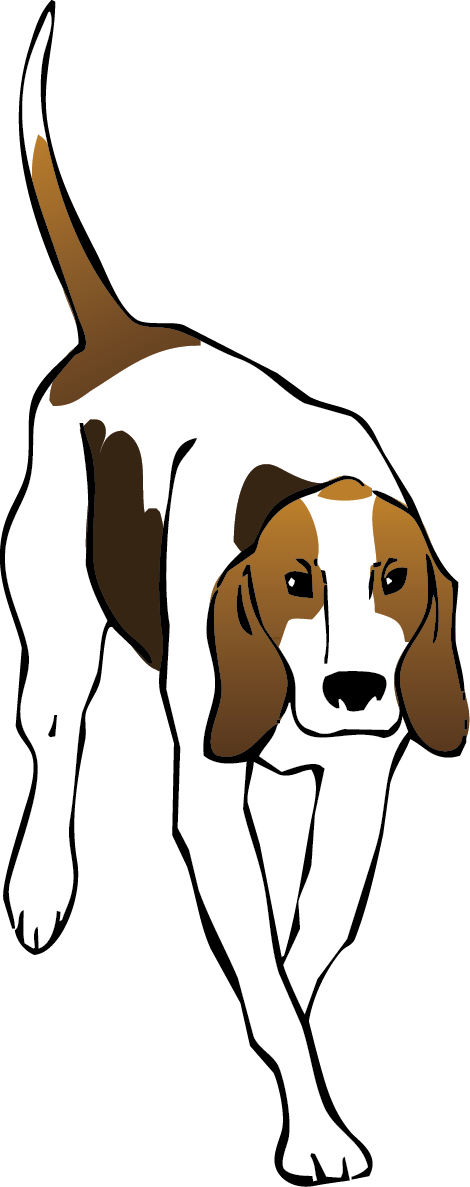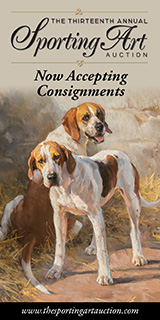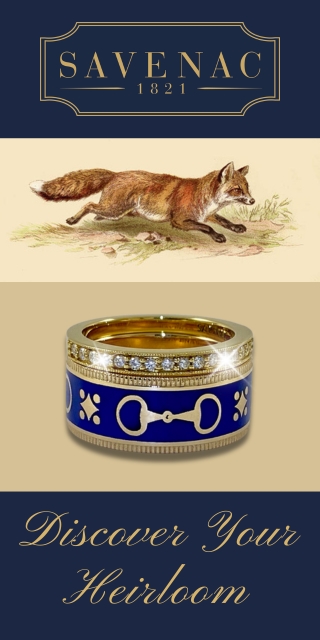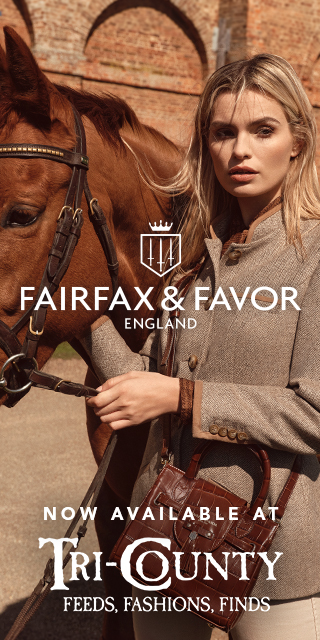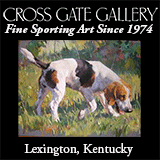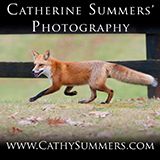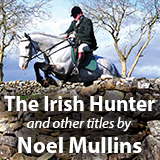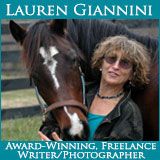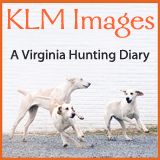Bonus Articles
The Great Hound Match: Day 4
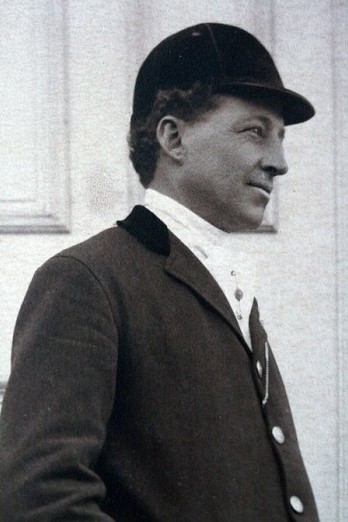 Harry Worcester Smith in hunting attire, circa 1910, from the Harry Worcester Smith Archive (MC0041), National Sporting Library & MuseumThis week's Bonus article, free to all (no subscription necessary), is an excerpt from Chapter 10 of "The Great Hound Match" by Martha Wolfe―a historical account (with liberties taken) of that famous quarrel between Masters A. Henry Higginson and Harry Worcester Smith over the merits and hunting ability of the English foxhound compared to the American foxhound. The author views the match as “a metaphorical battle in America’s coming of age―her psychic independence from Britain’s lingering shroud at the turn of the twentieth century.”
Harry Worcester Smith in hunting attire, circa 1910, from the Harry Worcester Smith Archive (MC0041), National Sporting Library & MuseumThis week's Bonus article, free to all (no subscription necessary), is an excerpt from Chapter 10 of "The Great Hound Match" by Martha Wolfe―a historical account (with liberties taken) of that famous quarrel between Masters A. Henry Higginson and Harry Worcester Smith over the merits and hunting ability of the English foxhound compared to the American foxhound. The author views the match as “a metaphorical battle in America’s coming of age―her psychic independence from Britain’s lingering shroud at the turn of the twentieth century.”
Saturday, November 4, 1905, Grafton Hunt’s Second Day
“Hounds never ran so fast since the world began.”
−Allen Potts quoting Dr. Charles McEachran, judge for The Match, Richmond Times-Dispatch. Saturday, November 5, 1905
You and Ham trot on ahead with the hounds,” Smith told Mal Richardson. “We’ll not be far behind.”
Philippa’s Fox-Hunt
 "...made me feel as if I were being skillfully kicked downstairs." / Illustration by Edith Somerville
"...made me feel as if I were being skillfully kicked downstairs." / Illustration by Edith Somerville
This week's Bonus article, free to all (no subscription necessary), finds Major Sinclair Yeates, R.M. (Resident Magistrate) posted to Ireland by the British Crown with the authority to adjudicate local disputes. He rents a house, Shreelane, for himself and his wife-to-be, Philippa, from Mr. Flurry Knox, Master of the local pack of foxhounds.
No one can accuse Philippa and me of having married in haste. As a matter of fact, it was but little under five years from that autumn evening on the river when I had said what is called in Ireland "the hard word," to the day in August when I was led to the altar by my best man, and was subsequently led away from it by Mrs. Sinclair Yeates. About two years out of the five had been spent by me at Shreelane in ceaseless warfare with drains, eaveshoots, chimneys, pumps; all those fundamentals, in short, that the ingenuous and improving tenant expects to find established as a basis from which to rise to higher things. As far as rising to higher things went, frequent ascents to the roof to search for leaks summed up my achievements; in fact, I suffered so general a shrinkage of my ideals that the triumph of making the hall-door bell ring blinded me to the fact that the rat-holes in the hall floor were nailed up with pieces of tin biscuit boxes, and that the casual visitor could, instead of leaving a card, have easily written his name in the damp on the walls.
In The Curranhilty Country
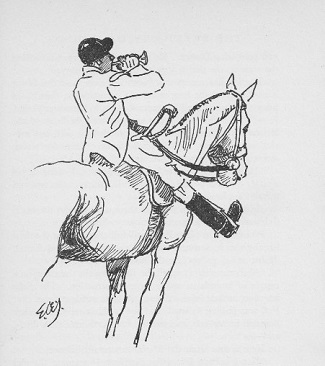 Illustration by Edith SomervilleNow that we all have more reading time on our hands, here is this issue’s Bonus Article to fatten the content for our subscribers and to open more articles, previously restricted, to our non-paying registrants. We’ve been talking about the Irish cousins and author team of Someville and Ross in this issue, so here’s a condensed version of a chapter from Experiences of an Irish R.M. The narrator is Major Sinclair Yeates, the lovable (in the instance of the Somerville and Ross stories) British Resident Magistrate (R.M.) sent to Ireland to adjudicate local disputes in the days before Irish independence in 1922.
Illustration by Edith SomervilleNow that we all have more reading time on our hands, here is this issue’s Bonus Article to fatten the content for our subscribers and to open more articles, previously restricted, to our non-paying registrants. We’ve been talking about the Irish cousins and author team of Someville and Ross in this issue, so here’s a condensed version of a chapter from Experiences of an Irish R.M. The narrator is Major Sinclair Yeates, the lovable (in the instance of the Somerville and Ross stories) British Resident Magistrate (R.M.) sent to Ireland to adjudicate local disputes in the days before Irish independence in 1922.
I Was the Vixen’s Designated Kit-Sitter
Dave Ellis photo
I had found the den of a family of red foxes and was going early each morning to take pictures of the mother and her young kits. The kits were five or six weeks old, and were at that curious, exploring stage. Their life at that point pretty much consisted of eat, sleep, and play.
The father did not seem to be around, so the vixen had a lot of work to keep her four kits fed and safe. She was not stupid. She soon figured out that she could make use of me. She had to spend several hours each day off in the woods hunting in order to keep the little ones fed, which meant that without a father around, she would have to leave them alone and subject to being found by other predators.
Horse Racing Terms: An Illustrated Guide (2)
Book Review by Norman Fine
Horse Racing Terms: An Illustrated Guide by Rosemary Coates, Merlin Unwin Books (UK), hardbound, illustrated in color, 140 pages, available online or directly from publisher, £8.99
Though this book is about the language of horse racing, much of the content is common to all horse people. And hunt racing and steeplechasing terms are included. And the little volume is the work of Rosemary Coates—a favorite illustrator of ours, whose work illuminates Deirdre Hanna’s humorous and continuing series about the two nineteen-year-old girls who left post-war England to work with horses in America.
Maiden, weaver, hands, claimer, the going, pony (the verb!), schooling, stayer—these and more than a hundred other examples of the arcane language of racing and horsemanship are tackled, many accompanied by Rosemary’s clever paintings. Also included is an alphabetic Glossary of Terms and a serious page on “How to read a Racecard.” Just the latter alone could turn the modest price of this book into a sound investment for the occasional race-goer’s next outing at the steeplechase course or racetrack.
Sporting Art Auction 2018 at Keeneland
Lot 49, Portrait of a Hound, Franklin Voss (1880–1953), American, oil on board, 12" x 16", signed, dated 1939, Probably commissioned by Anderson Fowler, MFH, Essex Fox Hounds (NJ): $5,000--7,000
November 18, 2018 will mark the sixth annual Sporting Art Auction at the Keeneland Sales Pavilion—a cooperative venture between the world’s largest Thoroughbred auction house and its Lexington, Kentucky neighbor, Cross Gate Gallery, a leading source of the world’s finest sporting art. Collectors will take home works of artistic merit at prices possibly as low as $2,000, many under $5,000, and others as high as six figures.
This year’s offerings, curated by Greg Ladd, feature 175 lots of painting and sculpture by masters long gone as well as by leading sporting artists of the day. Among the European artists represented are Cecil Alden, Samuel Alken, Lionel Edwards, John Emms, John Ferneley, Harry Hall, John Herring, Michael Lyne, Sir Alfred Munnings, and Belinda Sillars. American artists include Jean Bowman, Paul Brown, Herbert Haseltine, Julie Kirk, Booth Malone, Leroy Neiman, Richard Stone Reeves, Edward Troye, Larry Wheeler, and Franklin Voss. Also included are six works by America’s reigning ‘rock star’ of today’s sporting art world, Andre Pater.
Dartmoor and Doyle
From Foxhunting Life archives, now that we all have more reading time on our hands, here is this issue’s Bonus Article to fatten the content for our subscribers and to open more articles, previously restricted, to our non-paying registrants. We were reminded of Sir Arthure Conan Doyle's poem since we've been talking about Dartmoor in recent issues.
Janet Ladner photo
Photographer Janet Ladner was out following the Mid-Devon Foxhounds when she came across these wild ponies taking shelter from the snow. I have hunted on Dartmoor, in England’s West Country, and found it to be a fascinating landscape of bleakness and beauty, with visible reminders of cultures that serially take one back in time all the way to prehistory. While hunting, one comes across ditches left by tin mining activity that began in pre-Roman times and continued to the twentieth century, evidence of farm tillage going back to the Bronze age in the parallel rows running across the slopes, and standing stones erected in prehistoric times. During quiet moments when hounds check, one can allow the imagination to soar.
For me, Dartmoor also conjures memories of cold winter boyhood days at home, reading the spooky mystery, Hound of the Baskervilles by Arthur Conan Doyle. It was the third of his Sherlock Holmes novels to be published, and this Dartmoor mystery filled my young head with delicious terror.
By coincidence, Janet Ladner’s photos of the ponies on Dartmoor arrived just as writer/editor Steve Price sent me this foxhunting poem, written by Arthur Conan Doyle. A confluence of Dartmoor and Doyle. Who knew he wrote foxhunting poetry?
William Dunlap: The Walker Foxhound as an Allegory
“Dunlap” by William Dunlap; foreword by Julia Reed, essay by J. Richard Gruber; Jackson, MS: University of Mississippi Press, 2006; available at Amazon
William Dunlap is an important contemporary artist of the South with a powerful affinity for southern landscapes and Walker foxhounds. Dunlap’s work may be seen in many prestigious collections, including the Metropolitan Museum of Art and the Corcoran Collection of the National Gallery of Art.
His book, Dunlap, features more than one hundred works, produced over a thirty-year period. It is published in a trade hardback and a limited edition of two hundred signed, bound-in-linen covers, housed in a matching linen-covered clamshell box. A signed, numbered print featuring four Walker foxhounds is included in the box. The book's cover features a surrealist landscape with a white Walker foxhound, Delta Dog Trot, appearing ready to climb right out of the painting, a nod to nineteenth century trompe l’oeil techniques. The painting, “Delta Dog Trot, Landscape Askew” hangs at the Alluvian Hotel in Greenwood, Mississippi.
Dunlap’s grandfather was “a foxhunter of the old school,” Dunlap writes. “He bred and hunted generations of pure blood Walker Hounds. With names like Lucky, Mary, Speck, Sally and Bo, these dogs were all legs, lungs, nose and heart. They lived to run, but spent most of their lives laying around the kennel, eating, sleeping, stretching and occasionally giving off the deep-throated mouth that would send any fox in earshot scurrying for the nearest hole.
James Barclay’s Hunting England
My Hunting England, James Barclay, Ruddocks, Lincoln, UK, 2015, cloth, illustrated, large format, 143 pages, £45Foxhunters are often regarded by the uninitiated as a pack of wealthy horsemen in fancy clothes galloping gaily over the countryside. Truth be told, some foxhunters riding in their private and select world above the fray see it the same way.
James Barclay learned differently. In his just-published My Hunting England, he tells of his life in hunting, his love for England, and—for a man born high above the fray—tells his story with humanity, sympathy, and respect for all manner of hunting man and his quarry.
A frequent contributor to the pages of Foxhunting Life, James Barclay was born to a banking family well-represented in the world of hunting. He, his sister, two brothers, mother, father, grandfather, and great-grandfather all served as Masters of Foxhounds—a family way-of-life that began in 1896 when his great-grandfather became Master of the Puckeridge. James served as Master of five hunts from 1983 to 2012: the Essex and Suffolk, Fitzwilliam, Cottesmore, South Wold, and Grove and Rufford.
James’s new book is part memoir, part snapshot of hunting in the twenty-first century, and part tribute to those who left their mark on the sport of his life. He entered hunt service at the bottom and toiled alongside the other lads in the kennels. Nor, as he was to find, were all kennels equal.
Is the Jockey Really an Athlete?
The still-fresh images of American Pharoah’s victorious jockey Victor Espinoza standing in his irons, fist in the air, cruising past the stands of cheering spectators, legs bobbling to absorb the shock of each footfall, provide a perfect segue into this article by Betsy Parker.
A jockey isn't really an athlete, After all, the horse does all the work, right? / David Chapman photo
Overheard railside at the Foxfield Races near Charlottesville: One pastel-clad college kid to the next as they rummage for beer in their cooler before noon on Saturday: “Jockeys aren't really athletes. They just sit in the saddle for a few minutes. I could do that!”
I almost fainted. Here the most provocative lede of the decade just dropped in my lap, and I couldn't get to the jock's room fast enough to dangle the mother of all conversation-starters like a tenderloin in front of a pack of hungry dogs. Hustling up the hill, I tried the assertion on jockeys Gerard Galligan and Brendan Brooks. They laughed.
“Anyone who'd say that has never ridden a race,” Galligan sniffed.
“Anyone who'd say that has never ridden a horse!” Brooks countered. “There's so much more to racing than 'riding.'”
As the Irishmen trailed off to walk the Barracks Road course, I jotted some interview questions. There was more to the story than laughing at a schoolboy's boast. It's not only athletic endeavor that drives competitiveness, as I'd soon find out. It's part will to win, part boldness. Part athletic concentration, part love of sport. It's a certain level of excitement tempered by highly-honed mental agility.
A 1980s University of North Carolina study measured that pound-for-pound, jockeys are the strongest, quickest, most agile and most hardcore athletes on the planet. Had the researchers studied jump jockeys, they'd've doubled it.
